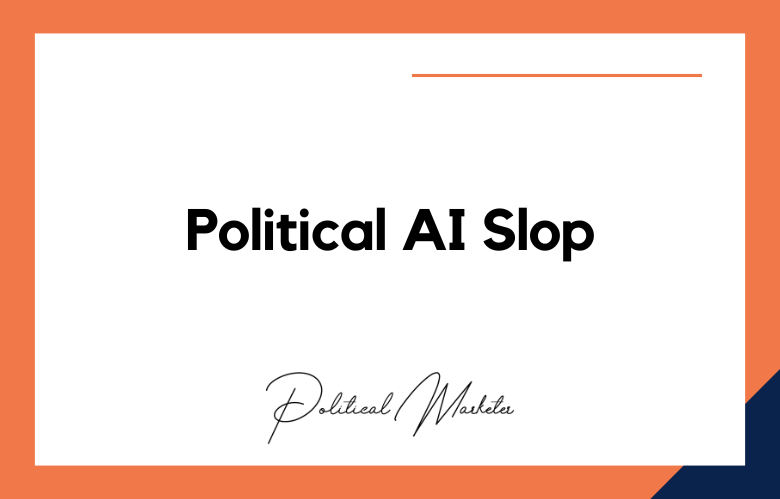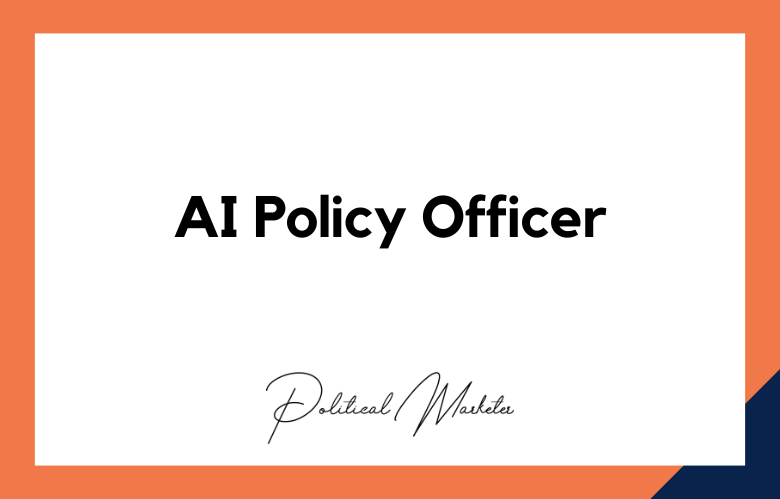The world has witnessed a monumental shift in the political landscape in recent years. From the rise of populism to the pandemic response, political discourse on social media channels has exploded. While this may seem reasonable, it has resulted in information overload and made it difficult for policymakers to keep up with the data deluge. This is where generative AI can help. We will explore how fertile AI can help navigate the challenge of political data overload.
Navigating the Deluge of Political Data with Generative AI
Humans have always sought ways to make sense of the world around us. From the earliest civilizations to the modern-day, the pursuit of knowledge has driven us to innovate and create.
And in the age of digital data, we have more information at our fingertips than ever. But while this abundance of data represents an incredible opportunity, it poses a significant challenge.
Information overload can be overwhelming in politics, even for the most seasoned professionals. This is where generative AI comes in. We’ll delve into generative AI and explore how it can help us make sense of political data.
Before we go any further, let’s define what we mean by generative AI. At its core, generative AI refers to a class of algorithms that can produce new data based on patterns and relationships in existing data.
Revolutionizing Politics with Generative AI: Overcoming Data Overload
The emergence of generative AI technology has great potential to revolutionize politics. In this digital age, political campaigns generate vast amounts of data, including social media posts, demographic statistics, and survey results.
Such data overload can overwhelm political operatives, who must sift through it all to determine the most effective strategies for reaching constituents and winning elections.
However, generative AI offers a powerful solution to this problem. By automating the analysis and synthesis of political data, productive AI systems can quickly identify patterns and trends that might otherwise remain hidden.
This technology can also create targeted messaging that resonates with specific demographic groups, enabling political campaigns to reach a wider audience and deliver more persuasive messages.
Information Overload? Generative AI as a Solution for Political Data Challenges
In today’s technological innovation and advanced data analytics era, political data has become more significant than ever.
However, with the overwhelming growth of information available, it has become increasingly difficult to analyze data accurately and precisely. As information overload evolves as a political challenge, generative AI rapidly emerges as a solution.
Generative AI is a revolutionary technology that creates new and original content through statistical modeling techniques.
It accomplishes this by processing large amounts of data and generating new content based on that data. Generative AI can provide essential insights and predictions about various political developments when applied to political data.
From Chaos to Clarity: The Role of Generative AI in Handling Political Data Overload
In today’s political landscape, an immense amount of data is generated daily. From news articles to social media posts, an overwhelming amount of information is available to the public. This data overload can lead to confusion and chaos, making it difficult for citizens to make informed decisions.
This is where Generative AI, or Artificial Intelligence that creates new data, comes into play. Using advanced algorithms and machine learning techniques, Generative AI can sift through and analyze vast amounts of data, making sense of it all and providing clarity in a world of chaos.
Generative AI has the potential to revolutionize the way we understand and predict political events. Analyzing historical data can predict future trends and outcomes, allowing politicians and the public to make informed decisions.
The Rise of Generative AI: Unraveling the Political Data Overload Puzzle
The political landscape is becoming increasingly complex and data-intensive, leading to a rise in the use of generative AI for data analysis.
The sheer volume of data generated by political campaigns, public opinion polls, and social media platforms has made it extremely difficult to extract meaningful insights and make informed decisions. However, generative AI has emerged as a powerful tool for unraveling the political data overload puzzle.
Generative AI is a subset of artificial intelligence that uses algorithms to generate new content based on patterns found in existing data. In the political realm, generative AI can be used for various purposes, such as predicting election outcomes, identifying key voter demographics, and analyzing social media sentiment.
By examining large volumes of data and identifying patterns, generative AI can help political analysts make sense of complex information and make more accurate predictions.
Mastering the Data Deluge: Generative AI’s Guide to Political Information Overload
The current political climate is inundated with overwhelming information, and mastering this data deluge is essential to staying informed and knowledgeable.
Generative AI has emerged as an invaluable tool in navigating this landscape by processing and providing meaningful insights from the vast amounts of data available.
With the exponential growth of digital technology, the amount of unstructured data available has become staggering. Every minute, an estimated 347,000 tweets are sent, 4.3 million videos are viewed on YouTube, and over 2.5 quintillion data are generated.
This information overload can be daunting, particularly in the political sphere, where the stakes are high, and the consequences of misinformation can be severe.
Challenges of generative AI and Political data Overload
Data Analysis:
Generative AI can be trained to analyze political data in real-time, which can be extremely useful for policymakers. AI algorithms can sift through data sources like Twitter, Facebook, and news articles, looking for patterns and trends that would be difficult for humans to pick up.
The AI can then summarize this information in easy-to-understand charts and graphs, highlighting relevant information that policymakers can use to make informed decisions.
Predictive Analytics:
Predictive analytics has been around for a while, but combining generative AI and political data can take it to the next level. Predictive analytics can help policymakers anticipate the future, highlighting trends in political discourse and social media chatter.
This can enable them to take proactive measures rather than just reacting to events and anticipate the potential consequences of their decisions.
Language Processing:
Language processing is one of the most significant advantages of using generative AI in politics. It enables AI algorithms to understand the intent behind a statement or tweet, detecting the underlying emotive state, whether positive, negative, or neutral.
This technology can translate natural language into structured data, making it easier to analyze and make informed decisions. It can also help identify and remove hate speech and misinformation from social media.
Personalized Communication:
AI can be used to automate the personalization of communications with the public based on the AI’s knowledge of the individuals who want to be reached.
Using generative AI to understand who someone is and get a sense of what motivates them allows for effective communication and tailored messaging. This can be particularly useful during election campaigns, reaching those not responding to traditional media messaging.
Forecasting Election Results:
As elections approach, AI can take vast amounts of data from various polls and demographic information to develop forecasts of who will most likely win.
This informed forecasting could provide individuals and parties with insights that lead to better campaign strategies. Moreover, the AI can quickly compare historical electoral data with social media behavior to extract possible voting patterns and behavior changes.
Conclusion:
Generative AI is set to shape the future of politics in many ways. By processing and analyzing large amounts of political data, AI can help policymakers and citizens alike sift through the complexity of political discussions and identify trends and patterns that aid in decision-making.
The possibilities of generative AI in politics are vast and will continue to grow as the technology becomes more sophisticated. As we embrace the benefits of AI, it’s important to note that AI is not a panacea and should always work hand-in-hand with human expertise to ensure decisions that reflect our shared values.
Call: +91 9848321284
Email: [email protected]
Generative AI and the Challenge of Political Data Overload: FAQs
What Is Political Data Overload?
Political data overload refers to the overwhelming volume of information, such as surveys, social media, polling, and behavioral insights, that campaigns must process to make informed decisions.
How Does Generative AI Help Manage Political Data?
Generative AI uses algorithms to summarize, visualize, and even generate strategic content from massive datasets, helping political teams make faster, smarter decisions.
Why Is Data Overload A Problem For Political Campaigns?
Due to a lack of real-time processing capabilities, excessive data can lead to analysis paralysis, missed opportunities, and misinterpretation of key voter insights.
What Types Of Political Data Can Be Handled By AI?
AI can analyze social media sentiment, voter demographics, survey results, debate transcripts, donation behavior, and issue-based engagement metrics.
How Does Generative AI Differ From Traditional AI In Politics?
Traditional AI classifies and predicts patterns, while generative AI creates new content, such as briefings, ad scripts, or summaries based on the data it ingests.
Can Generative AI Identify Trends In Voter Behavior?
Yes. Generative AI models can detect emerging voter sentiments, issue priorities, or emotional responses by analyzing conversations across multiple platforms.
Is Generative AI Useful For Real-Time Decision-Making?
Absolutely. It enables campaigns to react instantly to news cycles, opponent statements, or voter feedback by generating responses and insights on demand.
What Are Some Examples Of Generative AI Outputs In Politics?
These include policy briefs, rebuttal drafts, voter persona summaries, automated reports, ad copy variations, and strategic playbooks.
How Does Generative AI Reduce Cognitive Load On Campaign Staff?
By processing complex data and automatically generating insights or content, it allows staff to focus on higher-level decision-making and voter engagement.
Can AI Filter Out Irrelevant Or Noisy Data?
Yes. AI models are trained to prioritize valid data, eliminate redundancy, and extract high-value insights from massive datasets.
How Is Generative AI Integrated Into Campaign Tech Stacks?
It’s embedded in CRMs, dashboards, communication platforms, and analytics tools to automate reporting, personalization, and strategic planning.
Does Generative AI Help In Political Speechwriting?
It can draft outlines or full speeches using language patterns, historical references, and voter sentiment data to align tone and content.
What Role Does Natural Language Generation (NLG) Play In This?
NLG is a subset of generative AI that translates data into human-readable text. It is used for auto-generating newsletters, updates, or analysis reports.
Can Generative AI Prevent Misinformation Spread During Campaigns?
It can detect inconsistent narratives, verify factual accuracy, and flag suspicious data inputs, though human oversight is still essential.
How Do Campaigns Avoid Overreliance On Generative AI?
By ensuring that AI serves as an assistant—not a replacement—human judgment, contextual awareness, and ethical checks remain critical.
What Are The Ethical Concerns Around Using Generative AI In Politics?
Potential concerns include data bias, over-automation, transparency issues, and the misuse of AI to generate manipulative or misleading content.
Can Generative AI Be Biased In Its Outputs?
Yes, if trained on biased data. Auditing models and ensuring diverse, representative data is used during training is essential.
What Skills Are Needed To Use Generative AI Effectively In Campaigns?
Teams require data literacy, prompt engineering skills, ethical awareness, and a basic understanding of AI model behavior and limitations.
Is Generative AI Cost-Effective For Small Campaigns?
Many generative AI tools are now accessible via SaaS platforms, making them increasingly affordable and scalable even for local campaigns.
What Is The Future Of Generative AI In Political Campaigning?
Generative AI will likely become a core campaign asset, offering dynamic content creation, strategic automation, and real-time data comprehension at scale.










